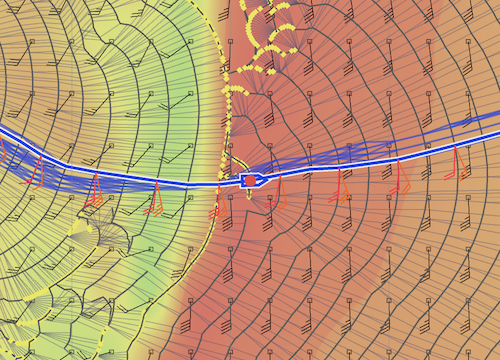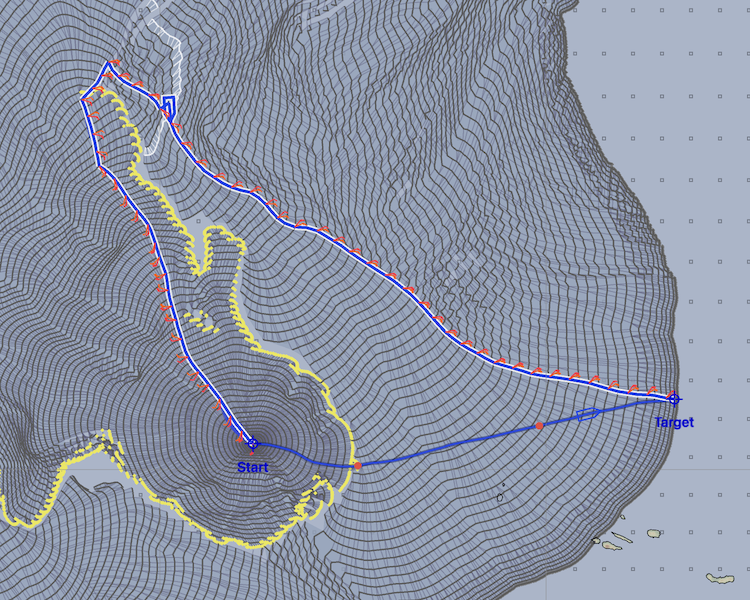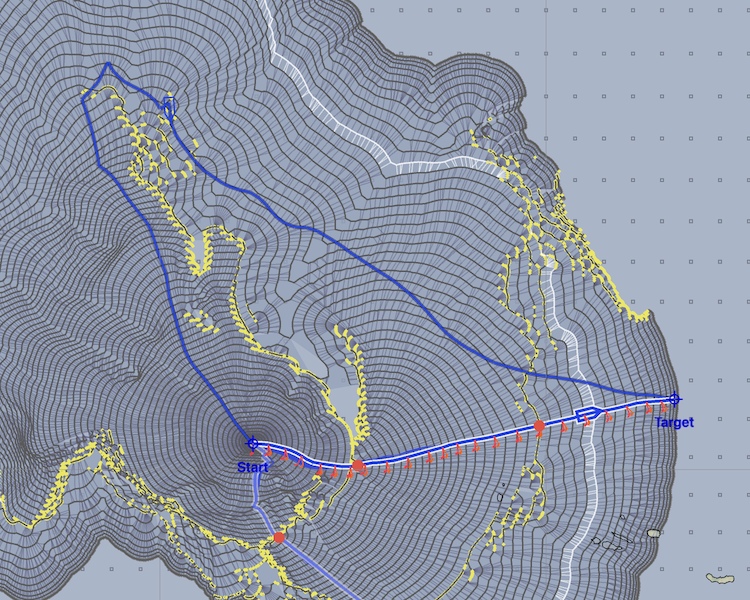
Hopefully, sailors using LuckGrib, who are following good navigation practices will be able to avoid experiencing too much wind (or waves) while on a passage. However, this may not always the case.
If you are leaving for a relatively short passage and have control over your departure time, you should be able to choose a departure which avoids experiencing an extreme passage.
However, if you are racing you will not be able to control the race start time. Alternatively, if you are mid-way through a long passage you will need to be able to navigate through whatever comes up. Depending on the season and area, you may not be able to plan a long passage which is guaranteed to avoid gale conditions.
If you do encounter strong winds while at sea, what you do will depend on a lot of things. A short list to consider is:
- the relative angles of the winds and the vessel.
- the strength of the winds.
- the wave state.
- the amount of sea room you have.
Depending on, well, everything, heaving to may be the best choice for a navigator to make. Wouldn’t it be useful if the Weather Routing system could help a little with thinking through this decision?
Traditionally, Weather Routing solvers have not been able to model a vessel heaving to. With the May 2022 update to LuckGrib, LuckGrib now has the ability to help you think about how the decision to heave to will affect the passage. (I believe LuckGrib is the only isochronal weather routing system that has this ability, see note at end.)

In this example, the vessel is in the mid Atlantic, and a weather system is about to over take them. The vessel is set to avoid winds greater than 30 knots, apparent, as well as waves greater than 4 meters. (These constraints are by no means recommendations. They were used to create a good example.)
The path on the left is the one that is not allowed to heave to. Its duration is over 7 days and 1,200 nm. With the path on the right, the solver is allowed to consider the option of heaving to, as long as doing so does not encounter winds greater than 47 knots (i.e. not a storm.)
The path which is allowed to heave to is roughly 1/2 the duration and distance of the path which could not heave-to.
If you were in this situation, at sea with these conditions approaching, would you be willing to sail over 700 additional miles? Note that you could easily make the decision to avoid these winds and sail for 7 more days, only to have the weather forecasts change in a few days such that you end up being forced to heave to anyway. A 7 day forecast which contains a strong weather system has a lot of uncertainty.
Before LuckGrib supported heaving to the system could either generate the path which avoided strong winds, or if you turned that option off, it could generate a path where you continued to sail regardless of the weather conditions. You now have a third option, considering the effect of heaving to on your passage.
There are additional details on heaving to in the user manual.
Is LuckGrib the only solver which supports heaving to?
At the time this was written, May 2022, I believe LuckGrib is the only weather routing system which allows vessels to heave to. If anybody knows of another system which allows this, please let me know.

